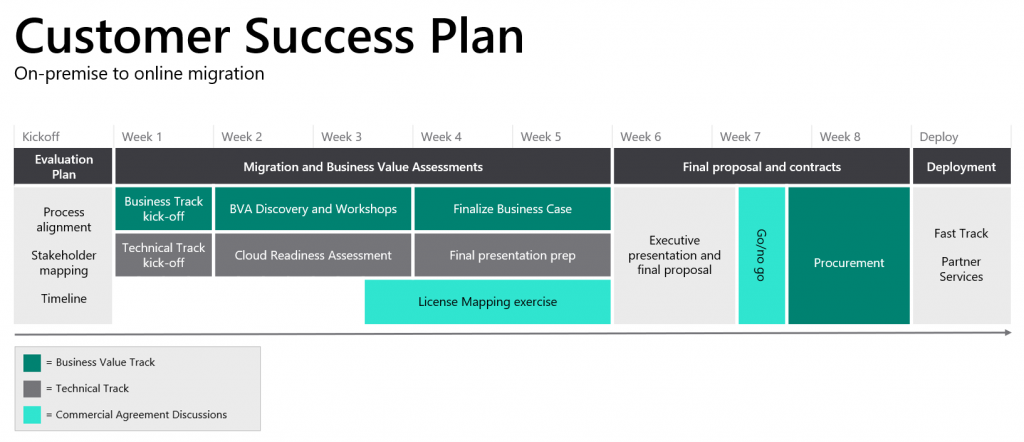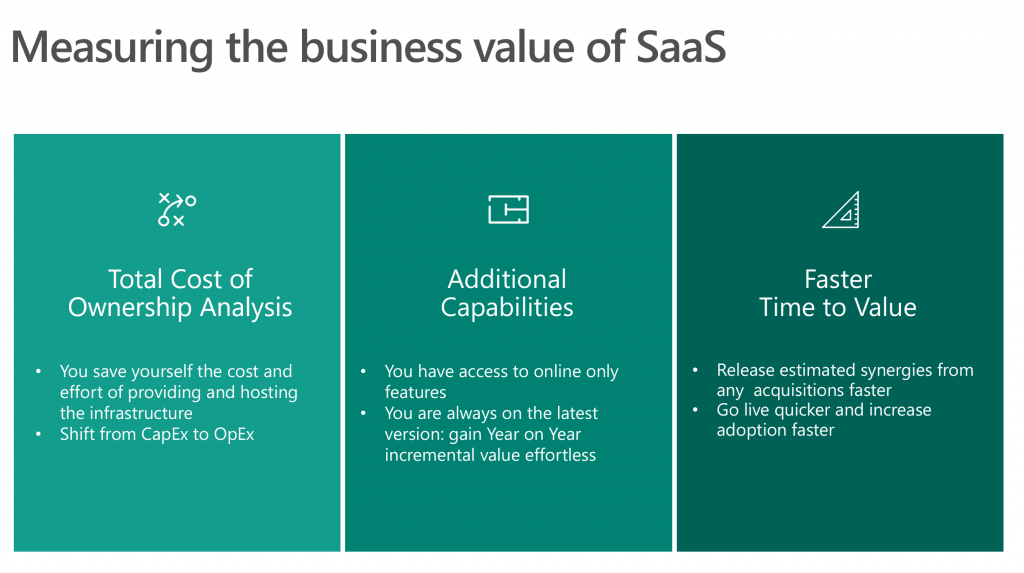
5 steps to move to a cloud CRM
 Customers these days have access to more choice, information, and products than ever before. On top of this, they have more devices to access everything on, and more channels to engage businesses on. Because of this, customers don’t have the time or patience for poor experiences.
Customers these days have access to more choice, information, and products than ever before. On top of this, they have more devices to access everything on, and more channels to engage businesses on. Because of this, customers don’t have the time or patience for poor experiences.
This is where customer relationship management (CRM) comes in. It’s long been at the heart of organisations’ customer strategies, and now it’s just as critical in creating compelling and personalised customer experiences. These days, not only do you need a modern CRM system, but also complete customer engagement solution. One that empowers employees with the data and the acumen to provide the best service and experiences to your customers and nurture these important relationships.

1. Why move your CRM to the cloud?
Customers hold the power in business relationships. Therefore, moving to a cloud business application that includes CRM is a significant step in nurturing these relationships. It unlocks your ability to consistently deliver relevant and personal experiences to every customer
“If customers don’t get the experience they expect, they’ll take their business elsewhere. This means businesses must be focused on customer expectations. And if they can deliver these differentiated experiences, it positively impacts your top-line revenue,” said Kate Leggett, VP and Principal Analyst at Forrester Research on a recent Microsoft webinar. “Customers stay with a more engaged company longer. They will buy more from you, increasing their lifetime value, and they will serve as an advocate for your company.”
To meet your customers’ needs and expectations, you must equip your employees with the technology to access important data and insights.
“As they move to the cloud, companies can leverage cloud technologies and deliver these differentiated experiences. Cloud CRM deployments give you faster time to value.”
Kate Leggett, VP and Principal Analyst, Forrester Research on a Microsoft webinar
A 2018 commissioned Forrester Consulting Total Economic Impact™study of Microsoft Dynamics 365 for Customer Service found that contact centre staff are up to 15 percent more efficient, with better tools and access to rich customer data and insight. This means they can better optimise customer experiences – a value add of $5.8 million to an organisation over three years.
The study also found that employees feel more empowered to do their best work, are more likely to stay, and have higher satisfaction. Also, IT departments are more agile and able to roll out innovation faster.
2. Gain business buy-in to ensure success
Like any other important change initiative, you’ll need a clear process in place that engages all relevant stakeholders and addresses their specific needs. You’ll need strong sponsorship and communications.
Based on experience of hundreds of projects, Microsoft has honed a best practice approach that ensures your evaluation process and subsequent migration are comprehensive yet efficient. The alignment between the business leaders and IT throughout the journey is critical, as is early buy-in.
“Shiny software and slick demonstrations alone don’t get a project signed off at the board and they don’t drive business change. It pays dividends to get the right people around the table at the outset, to agree on the key measures, steps and timings for a successful evaluation” says Mark Abery, Technical Solutions Professional for Dynamics 365 at Microsoft.
Both the Microsoft Dynamics 365 team and its cloud migration partners can work with your business to ensure that you’ve not missed any important steps and are able to reach a decision with confidence in 4-8 weeks.

3. Remember your value
While your cloud CRM success plan is in motion, remember to keep business value at the heart of what you do.
Moving to a cloud CRM solution such as Dynamics 365 will save your business the cost of providing on-premises infrastructure and software. It will also make your organisation more competitive in a fast-moving and consumer-centric market.
Moving to the cloud offers you access to the newest functionality without the disruption or cost of upgrading on-premises applications. It also ensures your business stays up-to-date with the latest security and compliance regulations. This frees up your IT staff to focus on innovation instead of maintenance.
All of this means you can focus on the important things in your business—your customers. Plus, you get additional capabilities online that aren’t available on-premises—capabilities that make your workforce more productive and effective in sales and customer service.
“Most organisations focus on understanding the Total Cost of Ownership difference with Online. What we really need to do is ensure we expand the conversation beyond TCO and also consider the value of the additional capabilities which are online-only or online first. In addition, we should also consider the value of the increased agility online provides – delivering faster time to value. By doing this we can make a much more compelling case to move. Our business value methods help articulate this case for change,” says Robert Smith, Director, Business Value Management.

4. Migration made simple
 At Microsoft, we want to see you succeed. This is why we offer best practices, tools, and resources via our FastTrack service. The Dynamics CRM On Premises migration service is designed to make it easy for you and your business to move your Dynamics CRM 2011/13/15 on-premises solution to Dynamics 365 Customer Engagement Apps. You get guidance and customised support from the FastTrack team as you migrate.
At Microsoft, we want to see you succeed. This is why we offer best practices, tools, and resources via our FastTrack service. The Dynamics CRM On Premises migration service is designed to make it easy for you and your business to move your Dynamics CRM 2011/13/15 on-premises solution to Dynamics 365 Customer Engagement Apps. You get guidance and customised support from the FastTrack team as you migrate.
Nick Latocha, Head of Data and Insights at Travel Counsellors used the FastTrack service to move his company’s CRM system to the cloud and take advantage of AI and cloud technologies.
“The process was seamless. The FastTrack team worked with us and our partner to build a custom migration plan to ensure our data moved over as easily as possible with as little downtime as possible,” he says. “We were even able to migrate earlier than planned, and with our custom migration, we didn’t hit any issues at all.”
Having the support of the FastTrack team in the migration means you can focus on driving user adoption and achieving your intended business outcomes.
5. Futureproof your business
Our research has found that 81 percent of executives believe AI will be integral to their business in two years. 31 percent of enterprises say AI is on the agenda for the next 12 months.
Yet, only 15 percent of enterprises are currently using AI. We’re currently launching numerous Dynamics 365 AI solutions that dramatically lower the barriers for marketing, sales, and customer service organisations to apply AI and see results in the shortest possible time frame.
Best of all, whether you want to understand your customers more deeply and personalise experiences, increase sales, or optimise support operations, you will not need a data science team to get started.
For example, Dynamics 365 AI for Customer Service not only enables leaders to understand the health of their operations based on key metrics, it applies machine learning to drill down to new levels of insight. These insights enable managers to anticipate emerging issues, to understand their impact on customer satisfaction and resolution rates so they may prioritise, and to track the success of their interventions with a level of speed and granularity that they’ve never had.
Beyond better decision making, agents are liberated from the error-prone administrative burden of labelling thousands of cases, and business experts can automate operations by deploying virtual agents without relying on their IT organisation.
“Now we’re in the cloud, our focus is to improve our sales pipeline by adopting some of these technologies. The plan is to not only improve our candidate experience, but also increase our conversion rates. These new technologies are key to helping us and making it as enjoyable as possible to do.”
Nick Latocha, Head of Data and Insights, Travel Counsellors
Learn more
You can see how a better customer experience will drive real returns and you’re going to need an AI-powered solution to achieve this. Watch our webinar with our guest Forrester VP, Principal Analyst Kate Leggett, for further insight into the economic impact of moving your CRM to cloud.
[msce_cta layout=”image_center” align=”center” linktype=”blue” imageurl=”https://www.microsoft.com/en-gb/industry/blog/wp-content/uploads/sites/22/2018/11/customerengagement4.jpg” linkurl=”https://info.microsoft.com/UK-Dyn365-WBNR-FY19-12Dec-04-Theeconomicbenefit-AID-747401-MCW0010160_02OnDemandRegistration-ForminBody.html?wt.mc_id=undefined” linkscreenreadertext=”Listen to the webinar now” linktext=”Watch the webinar now” ][/msce_cta]

About the author
Matt is currently a Senior Product Manager at Microsoft aligned to Dynamics 365, focussing on Customer Engagement. He is fascinated by the way tech can improve marketing, sales and customer service, as well as how tech providers market and sell these solutions. Prior to his experience at Microsoft he worked at a number of tech businesses, including one of the top analyst firms Gartner, honing his client development and relationship management skills. He is currently completing an MBA at Imperial College.




